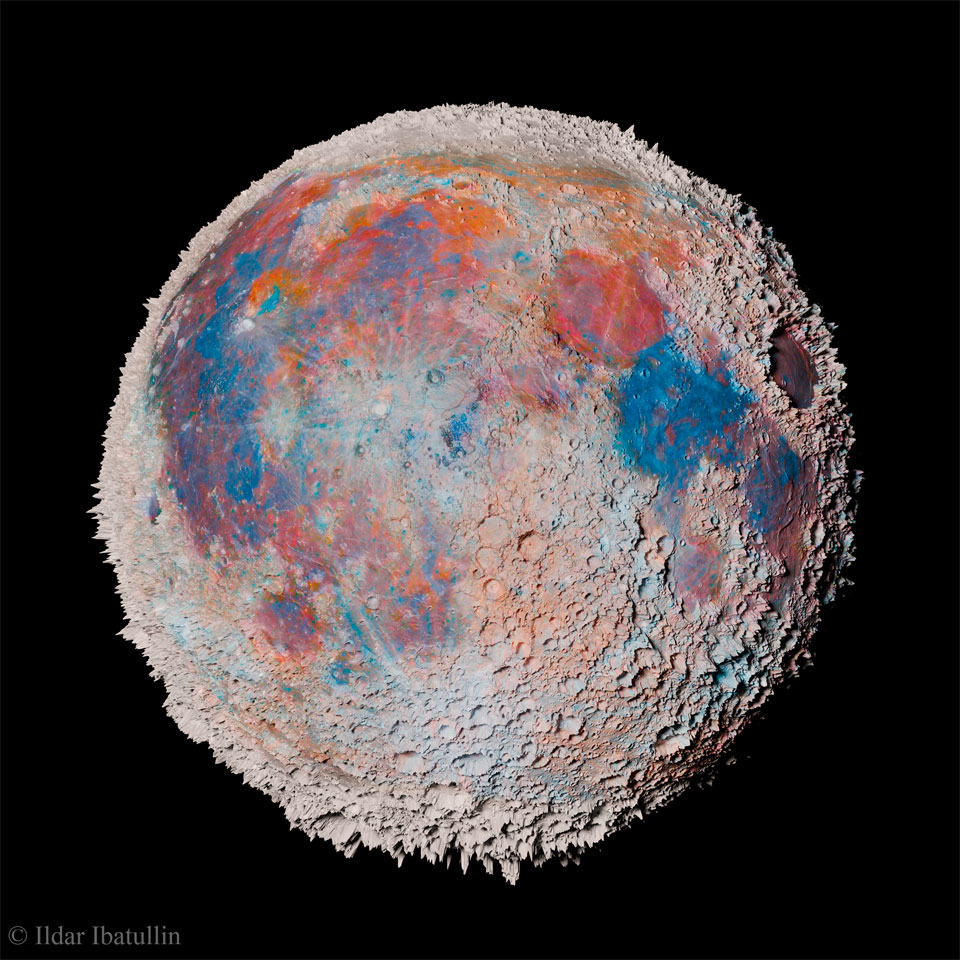On July 24, 2024, NASA published an image of a very spiky and colorful moon, which it really isn’t. Its author is a Ukrainian amateur astrophotographer Ildar Ibatullin. He created the picture by processing real photos of our moon to better express its geological features.

Photo of the day from a Ukrainian
NASA does a great job of popularizing astronomical knowledge. One of its manifestations is the website apod.nasa.gov, where some incredible photo is published every day. And today, July 24, 2024, it became the image of the moon, the author of which is a Ukrainian amateur Ildar Ibatullin.
In all honesty, the image is not a photograph. No matter how carefully you look at the nearest celestial body through a telescope, you will never see a hedgehog like the one in the photo. Ildar specially processed real photos of him so that all the tops extended upwards. After all, usually when we look at the Moon, it seems flat as a frying pan.
The same goes for the Craters. The photographer intentionally enlarged them to show how big they are. Also, it has become much better to see the dark areas that are called seas. In fact, no liquid water is actually there. They are formed by dark basaltic lava that solidified billions of years ago.
What Ildar Ibatullin shows the world
Ildar Ibatullin is 19 years old. He is a student of the KNU and has been photographing the starry sky and objects on Earth for some time. There is nothing surprising about it eventually being found by NASA. They are constantly working with amateurs in search of unique materials.

The idea for the image came when I learned about NASA’s LOLA mission and saw color photos where color indicated elevations or lowlands. I decided to create a photo with exaggerated relief but also at the same time show the dependence on the material on the surface. With several of my images of the Moon in enhanced colors, I created a map of the Moon’s surface. Based on these two maps, the final image is rendered. I published on my social networks and also sent a letter, explaining my work, to astrophysics professors Robert Nemiroff and Jerry Bonnell, who are responsible for NASA’s astronomical photo of the day.
Ildar Ibatullin
After all, despite the fact that mankind has been looking at the Moon throughout its history, and astronomers have studied almost every square kilometer of its surface, a person with a fresh eye always has the opportunity to see it as no one has ever seen it before.
For example, the colors in Ibatullin’s image actually reflect the geological content of the rocks. Areas with a lot of iron are shown in blue, and those with a lot of aluminum are colored orange.
According to apod.nasa.gov


